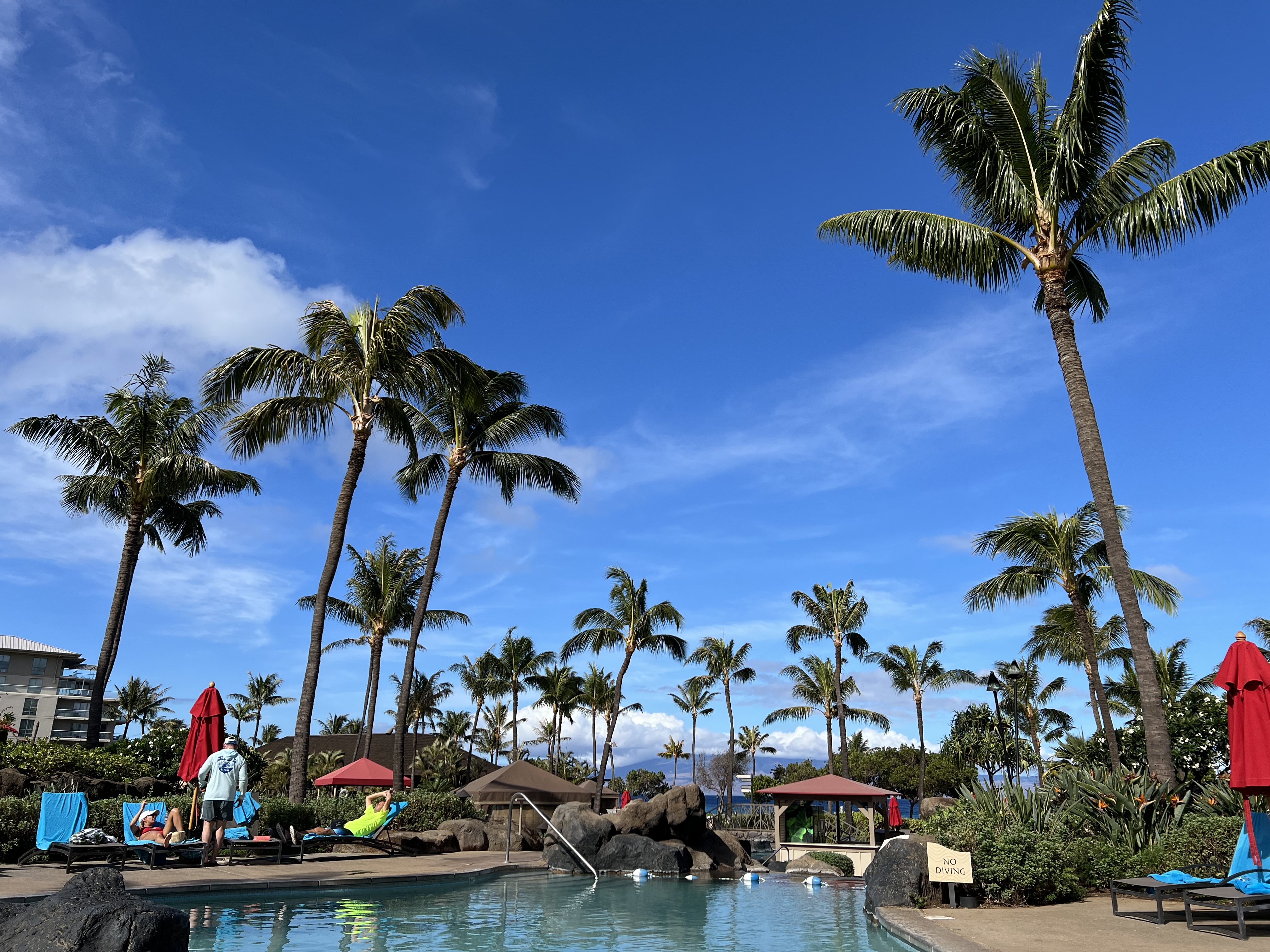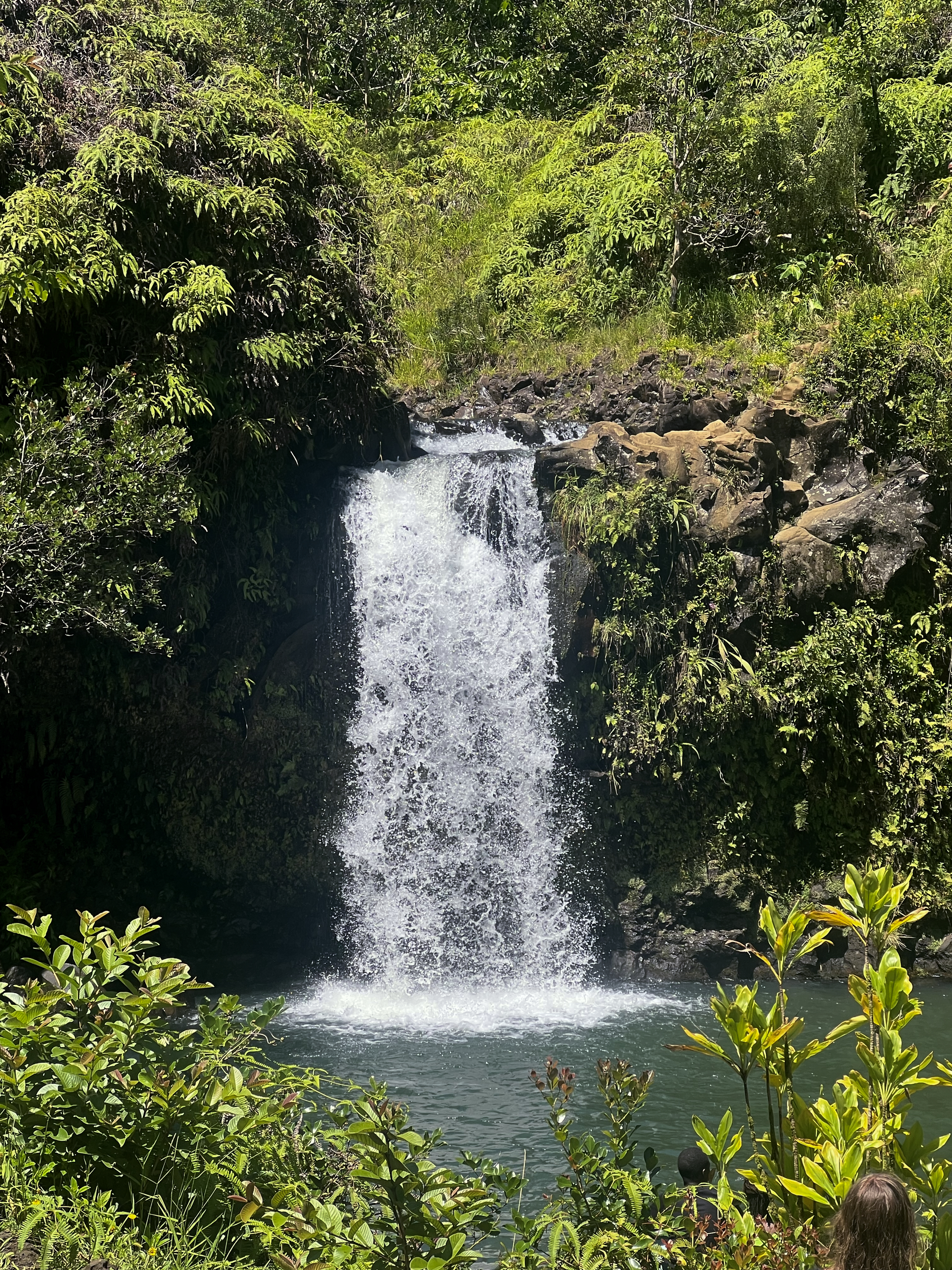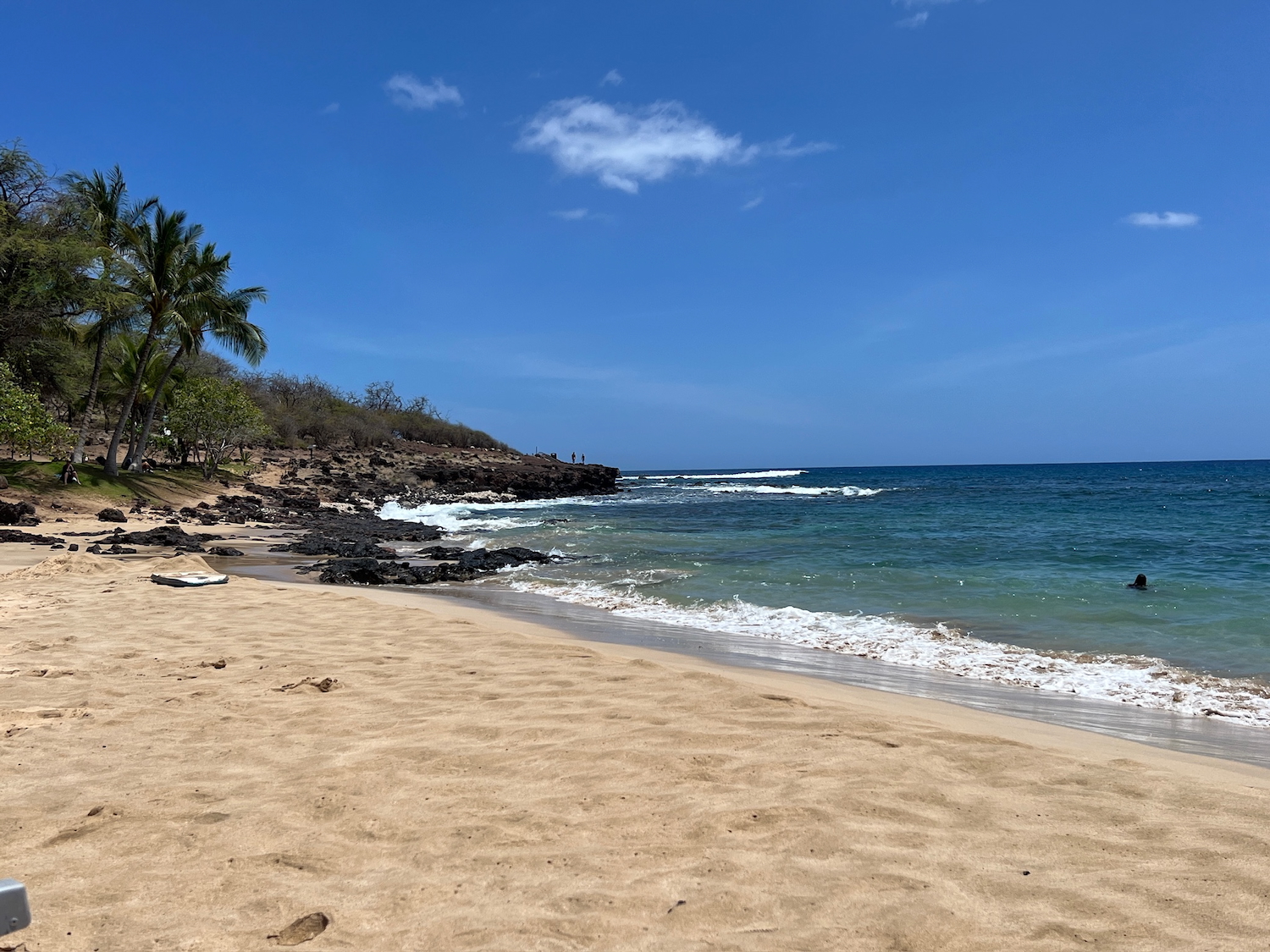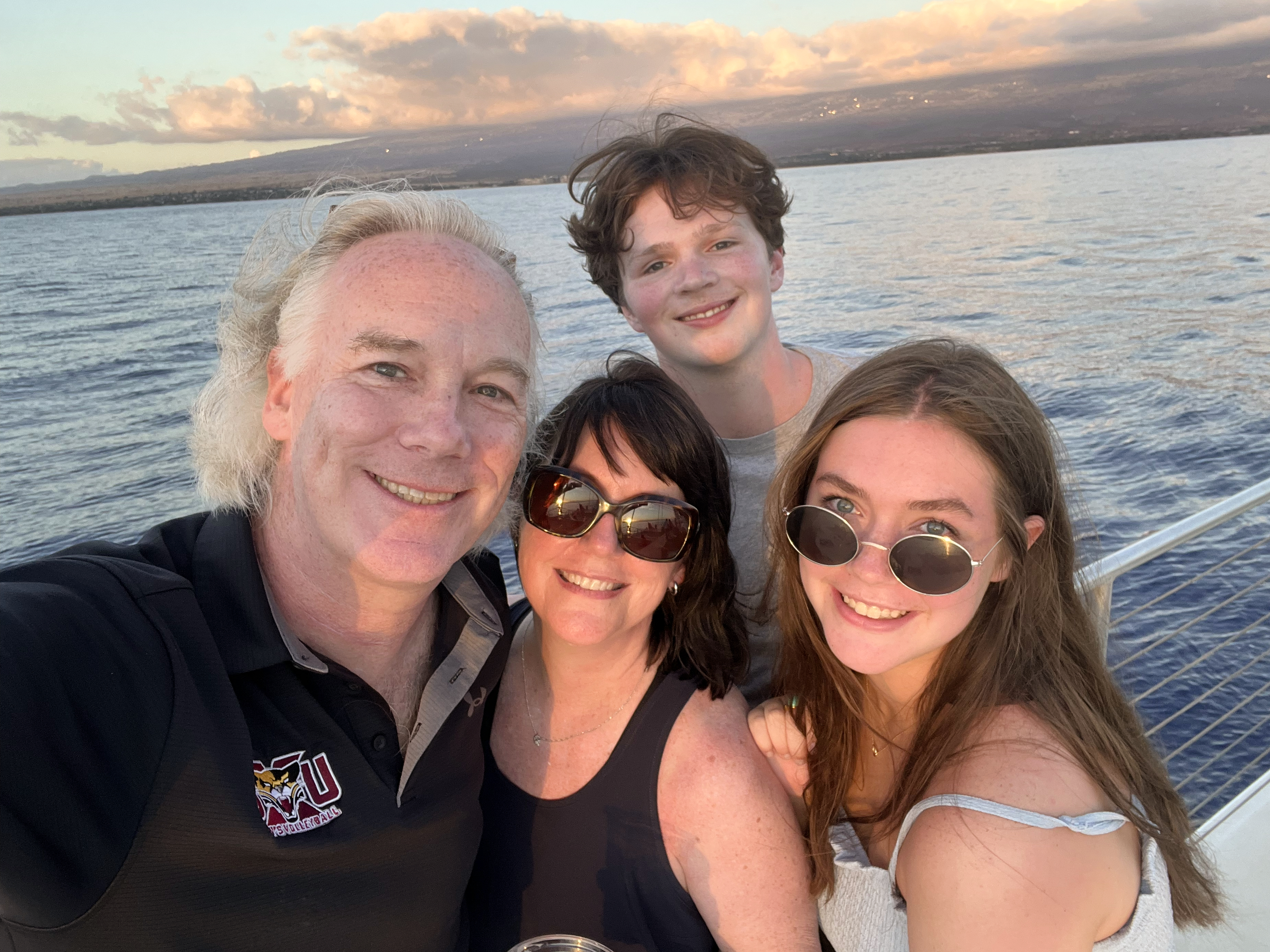maui

our view
Aloha! The four of us took our summer vacation to Maui last week. We stayed in Kā’anapali1, about 15 minutes north of Lāhainā on the west coast of the island. It had been about twenty-five years since I last visited Hawai’i, on which trip we saw O’ahu, Kaua’i, and the Big Island, one of the greatest vacations I’ve ever taken. I was eager to see more. We’d talked about hopping around a bit so the kids could see more of the state, but we decided instead to pick a single spot and go deep rather than bopping around to ultimately see less of several places. It was the right call given only one week. There’s a lot to see on the second-largest and third-most populated island in the archipelago.
It’s a stunningly beautiful place, as you’d expect. It seemed a bit hotter than anywhere else I’d been on the islands, if my memory served correctly, and maybe so: it turns out “Lāhainā” is made up of two words that mean “cruel sun.” It’s been a long time, but I don’t remember sweltering like that on the other islands. And, as you’d surely expect with all that beauty, it’s incredibly crowded. On most of our vacations (we generally prefer beachy/resorty places), it’s easy enough to book activities the day before, and to walk into restaurants without a reservation. Not on Maui. Some of these restaurants are booked 4-6 months out. It took a lot of googling, scrambling, and phone calls to get anything scheduled.2

on the road to Hana
One excursion was the road to Hana. The remote village of Hana is at the far northeastern corner of the island, and there is an extremely twisty and scenic two-lane (often one-lane) road from the largest town on the island, Kahului, to get you there. It’s about two and a half hours of gorgeous driving through the rainy side of the island. You can drive it yourself, though some locals call it the “road to divorce” in reference to the mainlanders who don’t handle that kind of pressure well. We booked a tour, which was the right move. Our guide, Malia, has deep family roots on the island, and she wove their history into the places we saw. Some of it may have been a bit exaggerated, but only in the way that any good storyteller will stretch the truth a little if it heightens the drama.
On the way into Hana we passed by a house where there was a banner out front celebrating a graduating high school girl. Our guide told us that some high school kids there elect to go to school in Lāhainā, over two hours away. They board there for the week and come home for the weekend. It’d be hard to overstate just how distant this place is from the real world, and we were all struck by it. Our phones didn’t really work, and Malia said the internet is poor there. Leah, in particular, thought about the girl in the banner. They’re the same age, in some respects experiencing the same things, but their lives are about as different as they could possibly be within this nation. We all wondered what that girl will be up to next year. College? Working in town? (And if so, doing what?) Moving to the city?
It was an exceptionally cool “man, this is a big country” experience. We shared the tour van that day with a diverse crowd: a San Bernardino-area woman who has taken up solo travel to process the grief of losing her husband, and four ladies from a docked cruise ship. Three of them were cousins from Madrid who travel together every year to celebrate their birthdays, and only one spoke much English. The fourth cruiser was a woman originally from Taiwan who now lives in the Bay Area. I’m glad to see that not all foreigners have been scared off from traveling to (and living in) the US, at least not yet, though I can certainly understand those who are. Maybe the regime doesn’t understand that Hawai’i is a state under their jurisdiction. Don’t tell them.
That’s a thing I want to mention, too. For the last decade or so, every time I travel out of the country, for business or with the family, I feel a searing, crushing shame for being American. I do what I can to hide it, but ultimately my Spanish is nowhere near good enough to pass, and, you know, look at me.3 So it was good to travel to somewhere fairly exotic without shouldering that burden. I did have to remind myself a few times that I could let my guard down. Nobody there was judging me by my passport, I don’t think.
Which is not to say that traveling to Maui doesn’t have its own political subtleties to navigate. After the fires devastated Lāhainā two years ago, I remember a lot of debate about whether it was ethical to travel to Maui. Obviously, going to Lāhainā town itself was and still mostly is out of the question. They have only recently finished clearing the last of the burned debris, and rebuilding has just begun in earnest. The famed Front Street is still basically gone. We kept a wide berth, passing by the town on the highway without venturing in. Yet for every voice telling people to stay away, it seemed there was another side saying please, come and spend money to help get the economy rebooted. I think that chatter has largely faded in the last year, and it’s back to business as usual for the most part. Maui is a pretty big island and at no point did we feel anything other than fully welcomed. As I said before regarding the crowding, it doesn’t seem like things could be too different from the status quo before the disaster, outside of the affected areas.45

Hulopo’e Beach on Lāna’i
Another day trip we took was by sea to the island of Lāna’i. It’s only 15 miles from where we stayed—we could see it from our condo’s pool—and lightly inhabited. There’s a small settlement with a population of about 3,000, and (inevitably) three luxury resorts and a golf course. We didn’t see much beyond the tiny harbor and the public beach, but it was obvious from the get go that this is a secluded, more unspoiled place. It felt remote. However, on the way over, our captain told us that 98% of the island is owned by Larry Ellison, one of our most odious billionaires. He has over twenty homes on the island. I was absolutely blown away. I was aware he owned an island, but not this island, the sixth-largest in one of our very own fifty states. It’s over 140 square miles! I just about fell off the boat. Colonialism and plantations, here and now. Faulkner had it right. “The past is never dead. It’s not even past.” It didn’t take away from the beauty of the beach, or the terrific snorkeling we did there, but that news shook me.

my ride-or-dies
If I’m painting a fraught or complicated picture of this vacation, I don’t mean to. We had a terrific time as a family, with a million laughs. I am incredibly fortunate to call these people my tribe, and I’m deeply grateful that we’re able to see cool places. With Leah going to college soon and Danny nearly done, it’s hard to say how many more of these trips there will be with all four of us together, and that togetherness is the main thing I want to celebrate. But it also has to be acknowledged that the colonization of that island, all of the Hawaiian islands, really, isn’t without significant downside.6
I thought a lot of the Eagles7 song “The Last Resort” from Hotel California. Don Henley can be an insufferable blowhard, but when he’s right, he’s right. The song in the large is about how people ruin beautiful places just by their presence. People suck. He’s talking about all of America, and maybe all settled lands, but in this song he gets specific about Aspen, southern California, and even name checks Lāhainā in the last verse:
You can leave it all behind
And sail to Lahaina
Just like the missionaries did
So many years ago
They even brought a neon sign
“Jesus is coming”8
They brought the white man’s burden down
Brought the white man’s reign
And you can see them there
On Sunday morning
They stand up and sing about
What it’s like up there
They call it paradise
I don’t know why
You call someplace paradise
Kiss it goodbye
-
I’m using the Hawaiian spellings of the islands and places not to be precious or demonstrate my mastery of diacritics, but in an effort to respect their beautiful native language. Hearing island folks say those words really brings home just how badly butchered the Americanized versions are. ↩︎
-
Heroic effort from Sharon here. ❤️ ↩︎
-
I suppose if I were traveling to Ireland or the UK I’d have a better chance of passing as native, until I opened my mouth. ↩︎
-
There was (and is) a vocal minority saying that all travel to any part of Hawai’i is unethical, as it is an occupied/colonized land that should be emancipated from the US. I get that, but literally every square foot of the US fits that description. We stole it all from someone else. Traveling across the street is unethical by that criterion. I’m much more sympathetic to the argument that the couple tons of carbon we dumped into the atmosphere to get there is an ethical problem. ↩︎
-
If you’re looking to help, the Maui Strong Fund is 100% legit, we were told by several folks there, and that money is going directly to help people with housing and other immediate needs. ↩︎
-
I cut out a paragraph about the devastation to native species from human-introduced invasives. Too grim even for me. ↩︎
-
Here’s a take: The Big Lebowski is wildly overrated dreck. If the most memorable thing about your lead is the band he tells you he hates four times, he’s a thinly drawn character and your movie is bad and you should feel shame. ↩︎
-
Don took some liberty with the text for the sake of meter, but that was a real sign. (It burned in 2023.) ↩︎
